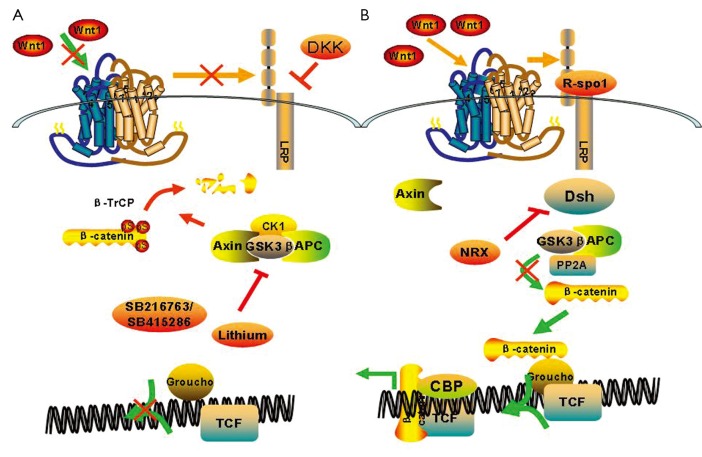Figure 3.
Wnt canonical pathway. (A) In the absence of a Wnt ligand, the cytoplasmic β-catenin is degraded by the “destruction complex”, which contains adeomatous polyposis coli (APC) and axin, glycogen synthase 3β (GSK-3β) and casein kinase 1α (CK1α) phosphorylated β-catenin. Accordingly, phosphorylated β-catenin is recognized by β-TrCP and constantly degraded by the ubiquitin-proteasome pathway; (B) The binding of WNTs, such as WNT3A and WNT1, to frizzled (FZD) and LRP5 or LRP6 co-receptors transduces a signal across the plasma membrane that results in the activation of the Dishevelled (DVL) protein. Activation of Dvl induces the dissociation of GSK-3β from Axin and leads to the inhibition of GSK-3β. This results in the accumulation of β-catenin in the cytoplasm and ultimately the nucleus where it displaces cyclic AMP response element-binding protein (CBP) β-catenin and facilitates transcriptional actiation of lymphocyte enhancer binding actor (LEF)/T cell factor (TCF) resulting in altered gene transcription. Ultimately, Wnt canonical pathway modulates changes in cell behaviours such as proliferation, survival and differentiation. DKK: dickkopf homologue; NRX: nucleoredoxin; R-spon1: R-spondin1.

